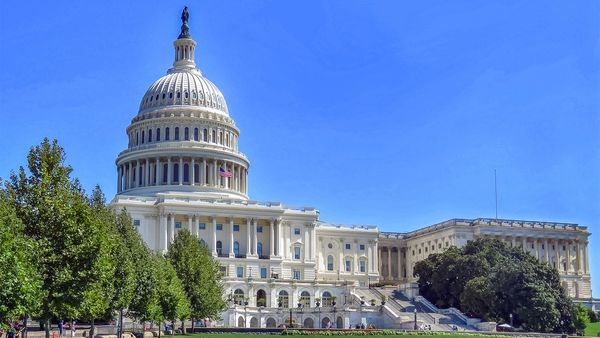Tech companies who want to raise capital are waiting on the sidelines as market conditions remain challenging.
Tech stocks have taken a beating in 2022 with several companies who have seen the value of their shares plummet by over 60%, leaving the private companies waiting for capital markets to reopen, Thomas Hayes, chairman of Great Hill Capital in New York, told TheStreet.
As of Sept. 21, there will have been 238 days without a tech IPO that is valued at over $50 million. This dearth of tech IPOs beats the previous records that were set following the 2008 financial crisis and the dotcom crash in the early 2000s as companies wait for market conditions to improve so they can garner a good price when they do go public.

Stripe
Fed's Tightening Policy Is a Culprit
The Federal Reserve’s pace of tightening and slowing down the economy by raising interest rates has impacted the credit and IPO markets, he said.
“The IPO and credit markets won’t clear until the Fed shows some signs of peak hawkishness,” Hayes said.
The pace of tightening needs to slow from "emergency measures" of raising rates by 75 basis point hikes to "beginning of end measures" of 50 basis point hikes or less, he said.
“Once markets can digest the new cost of capital, the capital markets will reopen,” Hayes said. “For now, it's been a one-way street higher regarding rates. We expect to see some relief soon.”
IPOs tend to “thrive when there are easy monetary conditions and rising markets and right now we have neither,” Steve Sosnick, chief strategist of Interactive Brokers, a brokerage based in Greenwich, Conn., told TheStreet.
The drought of IPOs could have been caused by the previous SPAC frenzy because a big chunk of companies that would have normally gone through the IPO process were swept up by them, he said. The SPACs were flush with cash that needed to be spent on deals and also offered a less rigorous path to going public than the traditional IPO process.
Private tech companies such as Stripe will hold off on going public until there is less volatility in the broader markets, Angelo Zino, an equity analyst at CFRA, a New York-based investment research company, told TheStreet.
“Clearly you need interest rates to stabilize and that would help valuations and sentiment across the tech space and environment to get private companies to potentially IPO again,” he said. “It’s been a crappy market because of the violent moves in interest rates to the upside.”
The rate hikes by the Fed have put a “major dent in tech valuations in the public markets,” Zino said.
Companies such as San Francisco-based payment provider Stripe and Mobileye, the self-driving division of Intel, will hold off on going public in 2022, he said. Mobileye filed for an IPO back in March while Stripe filed in 2021.
Instacart, a San Francisco-based grocery delivery business, is another company waiting for improved market conditions and filed for its IPO with the U.S. Securities and Exchange Commission in May and had initially aimed to go public as early as September.
Tech Company Valuations Nosedive
High growth tech companies such Nvidia (NVDA), Shopify (SHOP) and Snap (SNAP) have lost valuations ranging from 50% to 80% while other well known companies such as Snowflake (SNOW), DoorDash (DASH) and Airbnb (ABNB) have seen valuations and share prices “cut down sharply,” Zino said.
“There is no demand out there for companies to go public in this market - you don't have the investors at this moment and time,” he said.
Companies that are going to IPO are high-growth businesses that need to “sacrifice profits for growth,” Zino said.
The tech market will remain challenged over the next two quarters and will not improve until 2023, he said.
“It depends on how the market plays out, but the third quarter is not favorable for tech companies,” Zino said. “I do not see things getting interesting until the second quarter of 2023.”
Technology stocks are a “long-duration sector since they depend on earnings growth over time,” Anthony Chan, a former chief economist for J.P. Morgan Chase, told TheStreet.
“Rising interest rates lower the valuation of these companies as their higher long-term earnings are discounted heavily,” he said. “Higher interest rates are never a favorable development for companies with a larger share of their earnings arriving in later years compared to other sectors that enjoy a steady stream of near-term earnings.”
Some tech companies will have to be patient and wait for markets to return to more favorable conditions, Chan said.
“Many of these companies should wait until markets have greater visibility on the peak in yields that are hurting the valuations of these companies,” he said. “In my judgment, 2023 will be more favorable than 2022 and 2024 will be better than 2023 to go public.”
Tech companies going public too early face weaker valuations in the long run, which was seen by the disruptors in the fintech industry and pandemic darlings who saw declines of 60% to 80%, Art Hogan, chief market strategist B Riley Financial, told TheStreet.
“This keeps them at bay,” he said. “Companies are not going to the market.”
Going public too early can result in the next round of being a “down round,” Hogan said. “Their valuations will be below the last round of when capital was raised.”
The delay means some companies will have to rely on burning through their current cash flow or even taking on “more expensive money” from private equity or angel investors, he said.
“The problem with waiting is having no access to capital markets,” Hogan said. “The good news is it lets your business mature more. In 2020-21 a lot of the IPOs were fast and disruptive companies that likely went public too soon.”
The number of deals could rise in 2023 since there will be a calmer yield curve since the Fed will have reached 4%, he said.
“It will be a combination of deals finally getting done and mergers could be more robust than IPOs,” Hogan said.







